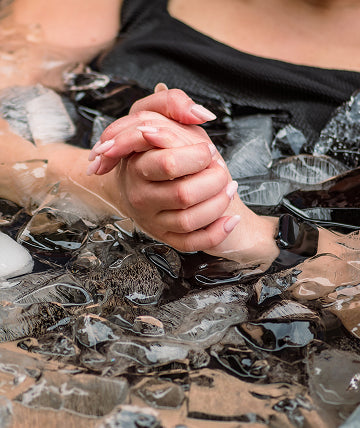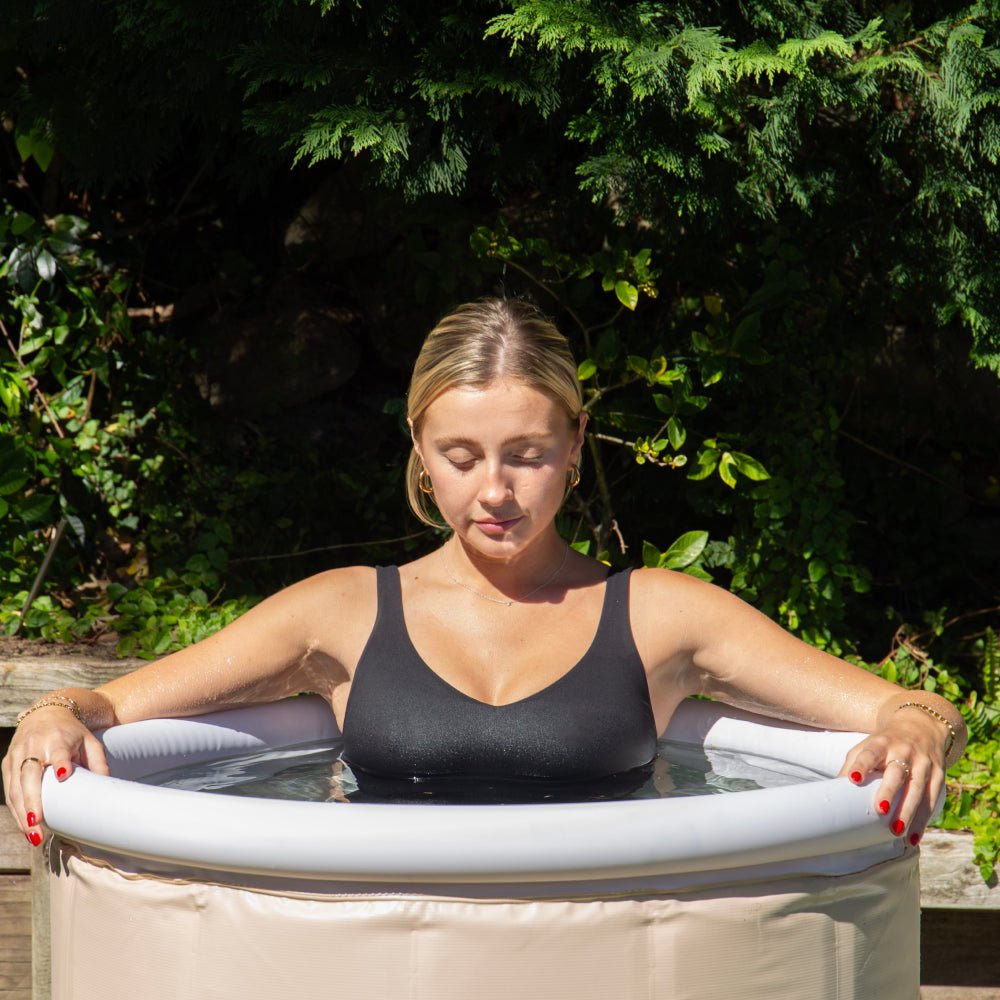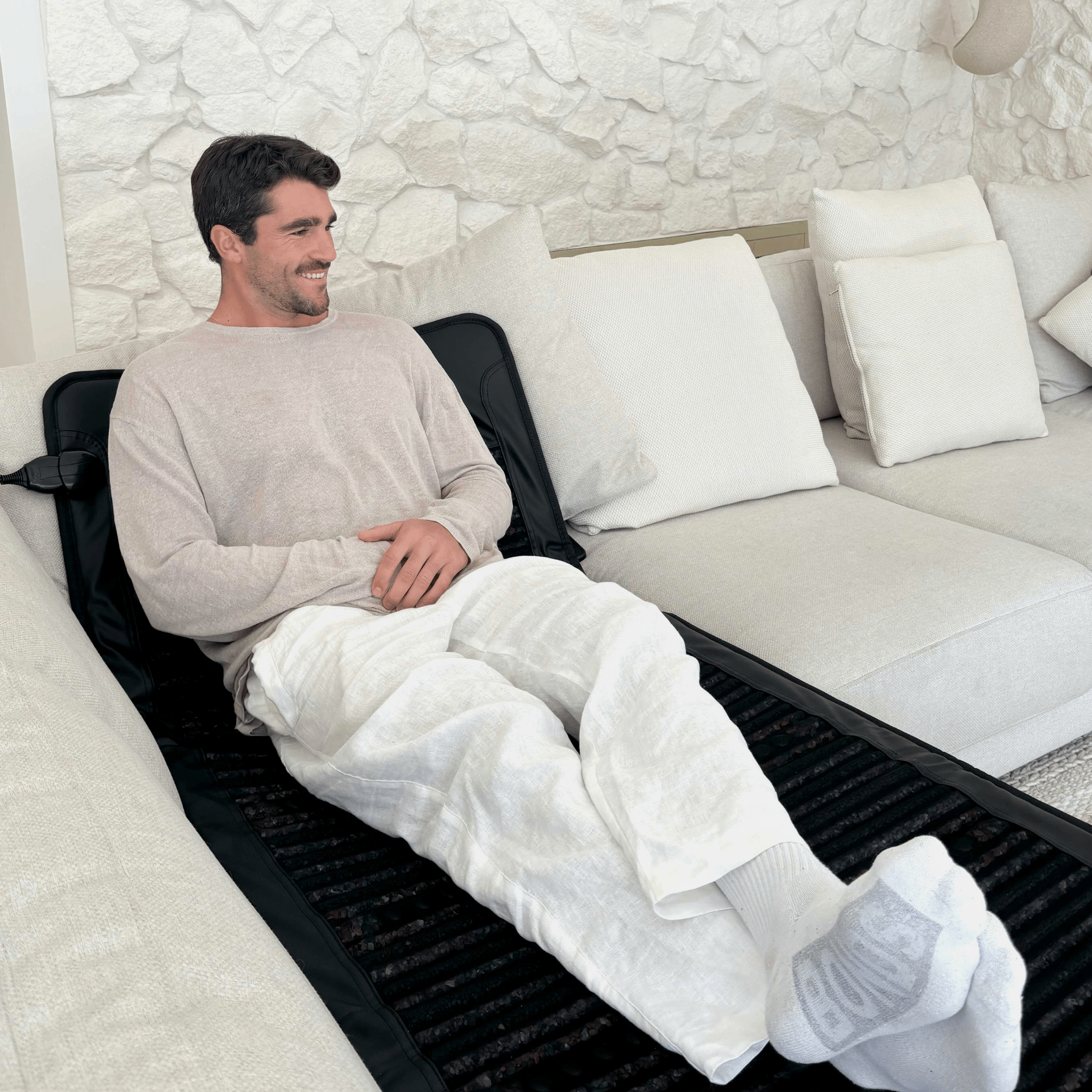Thinking about adding an ice bath to your routine? You’re not alone. Across Australia, ice baths have become a go-to recovery ritual for athletes, high performers, and everyday people looking to restore focus, energy, and resilience.
Our guide breaks it all down: from first-timer tips to keeping things clean, plus everything you need to know about the PeakMe Core Ice Bath and how it compares to makeshift setups.
Why Choose an Ice Bath?
Cold water immersion helps your body and mind adapt to controlled stress. When practised consistently, it can help:
-
Ease inflammation and muscle soreness
-
Improve circulation and speed up recovery
-
Boost mood, energy and mental clarity
-
Strengthen immune response and overall wellbeing
You don’t need a commercial setup to get the benefits. With the PeakMe Core Ice Bath, you can recover, reset and recharge, all from home.
What makes the PeakMe Core Ice Bath different?
The Core Ice Bath is purpose-built for stability, insulation and ease of use. Unlike DIY containers or plastic bins, it features:
-
A 6-layer thermal wall for superior temperature retention
-
Reinforced structure for comfort and durability
-
Fast setup (under 3 minutes)
-
Thermal lid and dust cover for clean, lasting cold
Most Asked: Ice Bath FAQs
How do I fill it?
Use a hose-pipe, container or large bucket to fill the bath up to 70% full with room temperature water. Add ice, bricks or freeze packs to bring the temperature down. Want to calculate exactly how much ice you’ll need? Use our Ice Bath Temperature Calculator.
The Core Ice Bath is insulated on all sides to maintain the water temperature longer, including a thermal lid and cover.
How cold should the water be?
Start between 10–15°C and lower gradually as your tolerance improves. Most users find their optimal recovery range around 5–10°C.
How long should I stay in?
Research suggests aiming for around 11 minutes total per week, which can be split into shorter sessions (for example, two 5-minute dips). Always listen to your body and exit immediately if you feel dizzy or numb.
What’s included with the PeakMe Core Ice Bath?
-
Insulated thermal lid
-
Waterproof digital thermometer
-
Dust cover
-
Fast-drain system
-
Microfibre towel
-
Carry bag with handle
Will the water stay cold overnight?
With full insulation and a thermal lid, the Core Ice Bath keeps water cold for up to three days, depending on external temperatures and sunlight exposure.
How portable is it?
Very. It folds neatly into a carry bag with a handle, making it ideal for travel, competitions or outdoor sessions.
Cleaning + Maintenance
Keeping your ice bath clean is easier than it sounds. Here’s how to keep things safe, fresh and long-lasting.
|
Step |
What to Do |
|
Regular cleaning |
Drain water weekly (every 5-7 days), rinse the interior and wipe with mild soap or diluted vinegar. Avoid harsh chemicals. |
|
After every use |
Cover the bath with lid to prevent leaves, oils and debris from entering. Inspect components weekly to avoid residue buildup. |
|
Extended use |
Install a water filter (use filters with plain clean water only, unless specified by the manufacturer) or UV steriliser to maintain clarity and hygiene. |
Contact our support team for advice on safe water treatment setups.
Can I Use It With Others? (Events, Gyms or Group Recovery)
Absolutely. Just add a few simple rules:
-
Everyone rinses feet first
-
Water should be changed more frequently
-
Use disinfectant or mild cleaning solution after every session
-
Install filtration and/or UV for commercial use
-
Avoid indoor ozone use, stick to approved outdoor spaces
Need help setting up a high-traffic recovery station? Contact our team for personalised support.
Safety Notes
Cold therapy can be powerful, but it isn’t for everyone. Always consult your doctor before use if you:
-
Have cardiovascular conditions, high blood pressure, or diabetes
-
Are pregnant
-
Have open wounds, recent surgeries, or nerve damage
-
Experience dizziness, fainting, or irregular heartbeat
If at any point you feel lightheaded, shiver uncontrollably or lose sensation, exit immediately. Warm up slowly and hydrate.
Chemical Safety Essentials
Using additives or sanitisers can help extend water freshness, but always use caution.
-
Never mix chemicals.
-
Follow manufacturer instructions carefully.
-
Use small quantities designed for small-batch water (not pool-strength doses).
-
Avoid chloride salts or strong bleaches.
-
Store all products safely and out of reach of children.
PeakMe takes no responsibility for improper or unsafe chemical use. Your safety always comes first.
If you’re unsure, stick to fresh water changes or ask our team for guidance.
PeakMe Ice Baths: Designed for Daily Recovery
At PeakMe, our ice baths are designed to meet Australian standards for quality, durability and performance. From the materials we choose to the lifetime support we offer, every detail is considered to help you build a sustainable wellness ritual that truly fits your life.
With TGA registration, expert-led design and a Sydney-based team behind you, it’s never been easier to tap into the power of cold therapy safely, confidently and consistently.
Ready to take the plunge? Discover the full PeakMe Ice Bath range and experience the difference recovery can make.






























